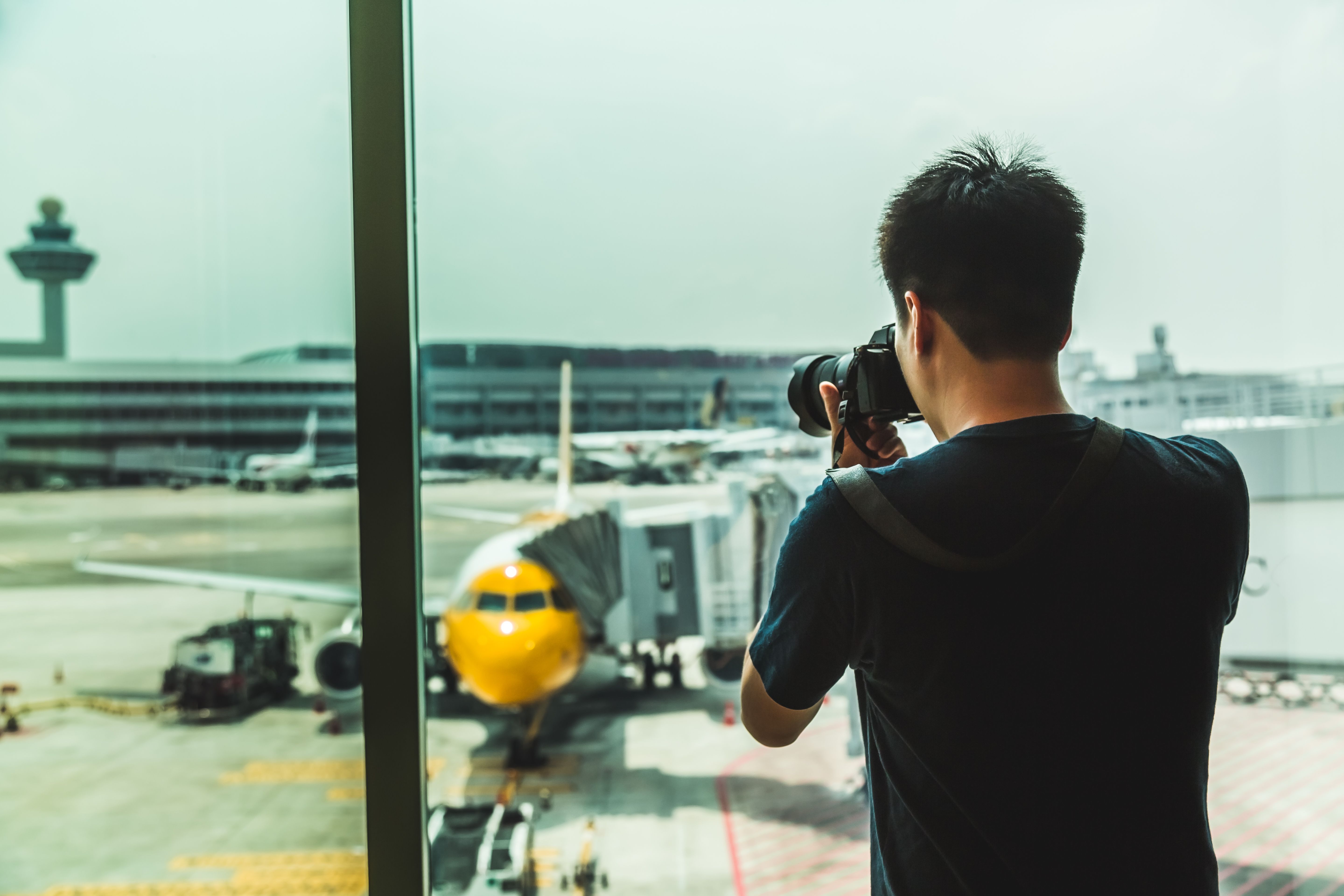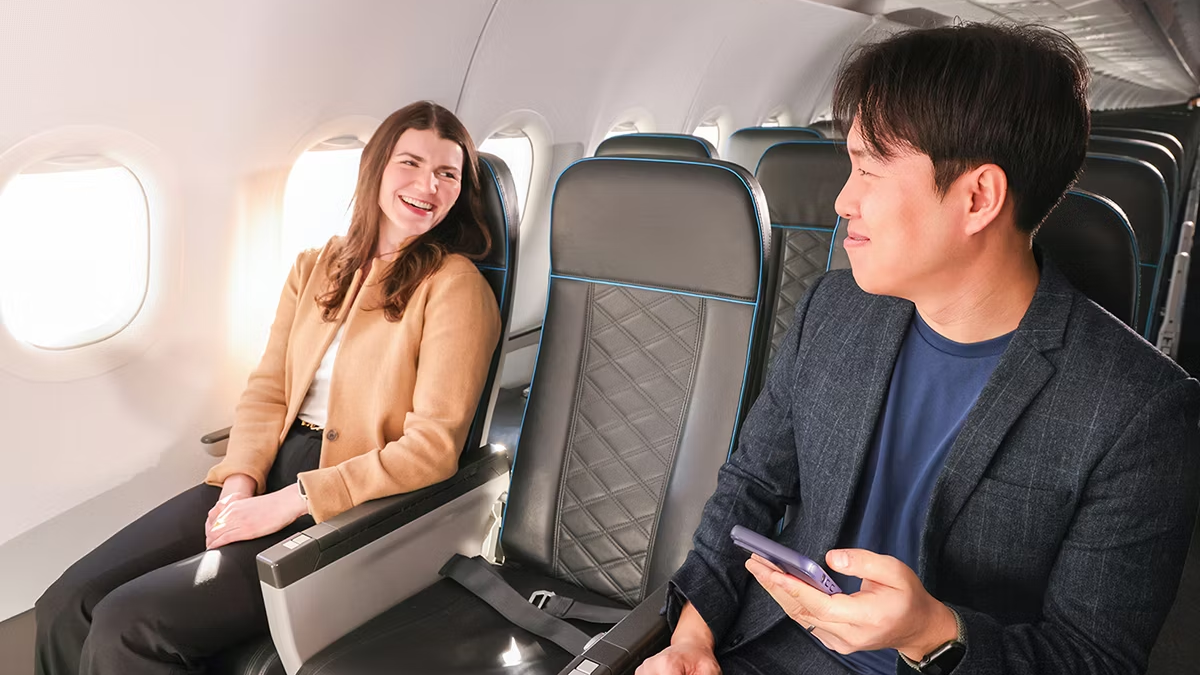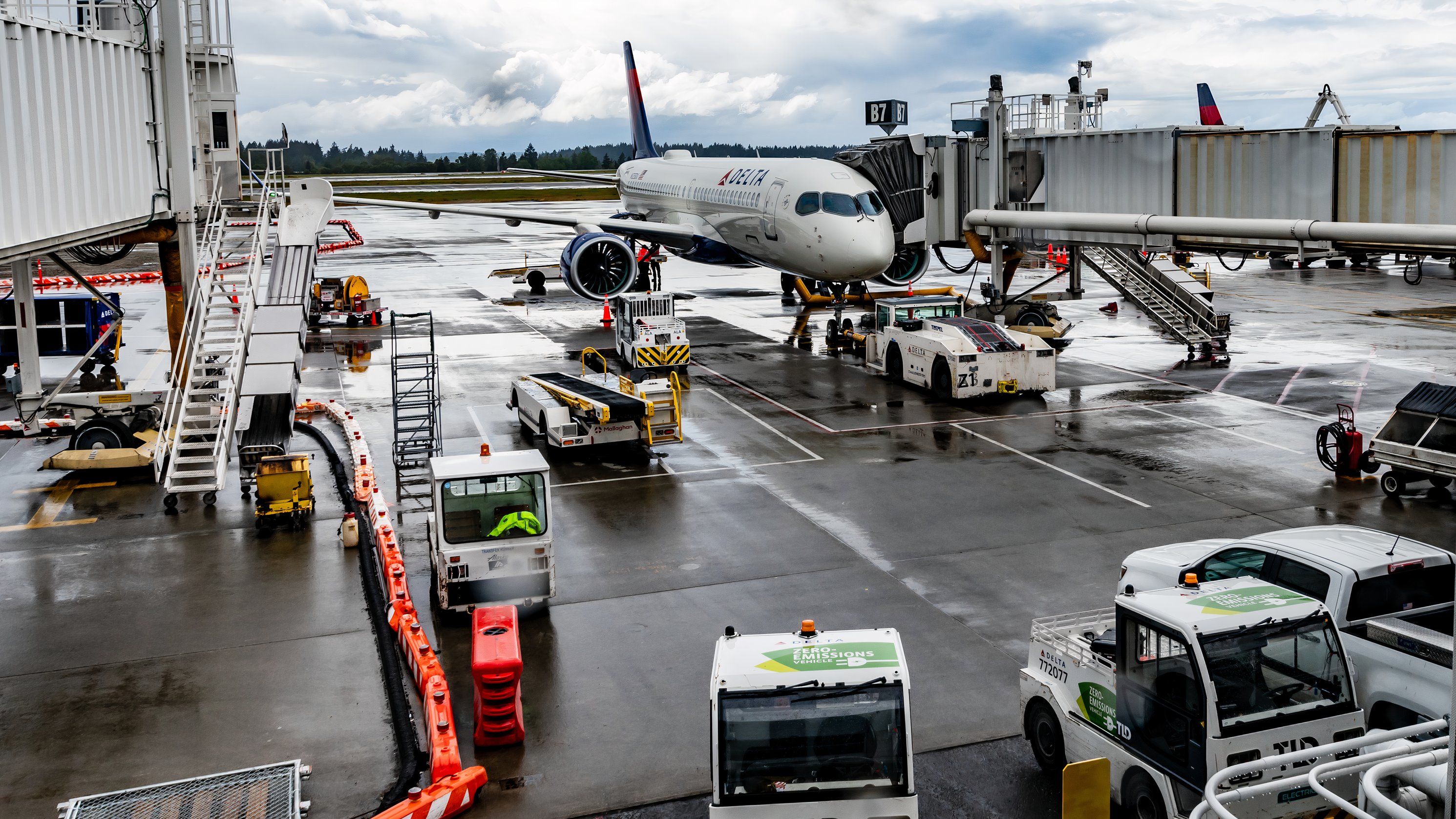Summary
- New airline safety briefings warn not to retrieve devices stuck between seats due to lithium battery fire hazards.
- Lithium batteries, common in today’s electronic devices, can ignite when crushed.
- The FAA reports over 540 verified lithium incidents since 2006.
In recent years, airline passengers may have noticed an additional warning in pre-flight safety briefings: don’t retrieve your phone if it falls between the seats. This instruction, now included on many flights by major airlines, is not simply to prevent passengers from injuring their fingers.
The real concern is the potential fire hazard lithium batteries pose if they become damaged. Crushed or damaged batteries can undergo thermal runaway, leading to fires that could jeopardize the safety of the flight.
The Federal Aviation Administration (FAA) reports more than 540 incidents involving lithium-ion batteries causing smoke, fire, or extreme heat on aircraft between 2006 and May 2024. As the prevalence of devices with lithium batteries increases, so does the frequency of these dangerous incidents.
New safety briefings
Frequent airline passengers often tend to tune out the pre-flight safety demonstrations. After putting hundreds or even thousands of flight hours under your belt, it’s normal to think a safety briefing will be just like all those you’ve witnessed before.
However, observant passengers may have noticed the recent inclusion of additional warnings in pre-flight safety demonstrations. On some routes with specific airlines, flight attendants now instruct passengers to refrain from retrieving their cell phones if they fall between the seats.
Qantas and Virgin Australia are two of the many airlines that have received this new safety warning. According to Travel Weekly, these Australian carriers now advise passengers:
“If your phone drops between seats, don’t try to retrieve it, but call cabin crew immediately.”
While some people may think this is an attempt to prevent passengers from hurting their hands or fingers while digging in between the metal seat frames, the actual reason is much more serious. Cell phones—or, more specifically, their batteries—pose a serious safety threat to airplanes if not handled properly.
What’s the danger?
According to the Civil Aviation Authority (CAA), the reason flight crews ask passengers not to retrieve fallen cell phones from between seats is due to the risk of a fire. The CAA’s statement on the matter explained:
“…passengers can inadvertently crush or damage their phone (or other portable electronic device) by moving seat parts/mechanisms, etc., which may increase the risk of a lithium battery fire event.”
Cell phones contain lithium batteries, which are extremely flammable and explosive. According to the ICC Compliance Center, lithium batteries that are overcharged, overheated, or crushed can experience a dangerous process called thermal runaway.
Thermal runaway causes a rapid increase in battery temperature and pressure, along with the release of flammable gases. The battery’s high temperature can ignite these gases, causing a fire.
If an airline passenger drops their phone and moves the seat to try and retrieve the device, there is a risk of crushing the internal lithium battery. This damage can cause thermal runaway, resulting in the phone overheating and catching fire.
Cell phones aren’t the only devices presenting this danger. Any device containing a lithium-ion battery can catch fire if crushed between mechanical airplane seats. According to Fodor’s Travel, other devices containing lithium batteries may include:
- Tablets
- Laptops
- E-readers
- Digital cameras
- E-cigarettes and vaping devices
- Battery packs
- Some medical devices
- Some children’s toys
Because of the same danger risk, these items have long been banned from flying in checked baggage in an aircraft’s cargo hold. Passengers are often reminded to remove things such as battery packs from suitcases before checking luggage, as a fire in the cargo hold would be much more dangerous than one in a passenger’s seat.

Related
Can You Take Camera Batteries On Planes?
Yes, but there’s a catch.
If a phone falls between seats inflight, a flight attendant is the best candidate to safely retrieve the device without crushing it. According to a statement to AFAR Magazine from a Delta Air Lines representative,
“There are different seat modifications between cabins and planes, so flight attendants are going to be able to retrieve the phone more easily.”
The Delta representative added that if the phone cannot be retrieved inflight, the crew can call the destination airport to ask for help. Often, someone there can bring tools to safely extract the device once the aircraft is on the ground.
Photo: Joe Kunzler | Simple Flying
Many airlines also now carry fire containment bags, such as those produced by AvSax, that can be used to contain an inflamed device if necessary. According to AvSax’s post on LinkedIn, more than 100 airlines worldwide now carry these lithium battery mitigation bags to ensure these situations can be handled quickly and safely.
Real-life incidents
Although the idea of a crushed phone creating a dangerous inflight fire sounds a bit far-fetched, it has occurred several times. While most incidents have resulted in minimal injuries, several have had more severe outcomes.
As explained in the Sydney Morning Herald, several lithium battery fires have occurred on Australian airlines. In fact, the problem has become important enough for the Australian Government to include it in a video about flight safety.
In 2014, 2016, and 2018, three separate fires resulting from mobile phones took place on Qantas flights. In each case, a passenger in business class dropped their phone between the seats and moved the seat in an attempt to retrieve their device. Crushing the phone resulted in fire, and Qantas’ cabin crews had to react quickly to extinguish the flames.
CAA’s Corporate Communications Manager, Peter Gibson, gave additional information about two of the incidents. In his statement to Travel Weekly, he said:
“In one case, they picked up the phone with tongs and dumped it in a sink full of water. In another case, they got out the fire extinguisher and gave it a blast.”
In 2023, a cell phone caught fire on a British Airways flight after a passenger moved their seat while attempting to retrieve the stuck phone. The cabin crew extinguished the fire, but the plane was forced to make an emergency landing.
Similarly, a United Airlines flight had to divert this past May due to a laptop stuck between business-class seats. Although the passenger followed protocol by alerting the flight attendants and, therefore, preventing a fire, an emergency landing was needed to safely extract the laptop.
The FAA’s data
These examples are only a handful of safety incidents involving lithium batteries on aircraft. According to the Federal Aviation Administration (FAA), there were more than 540 verified incidents involving lithium-ion batteries causing smoke, fire, or extreme heat from 2006 to May 2024.
Due to the growing prevalence of lithium batteries in commonly used devices, incidents of overheated lithium batteries on aircraft are increasing every year. In 2022, the FAA reported 74 lithium battery incidents, compared to just 54 the previous year. Perhaps thanks to the changes made in pre-flight safety briefings, the number only increased by three from 2022 to 2023.
However, passengers should pay close attention to these new safety warnings and understand the severity of the issue. In just the first half of 2024, the FAA verified 32 lithium battery incidents on passenger aircraft. Eight incidents are currently pending verification.
.jpg)
Related
Laptop Allegedly Catches Fire On Delta Air Lines Flight From Honolulu To Atlanta
The alleged incident opens up the lithium battery debate once more. What are the latest statistics, and what rules must passengers follow?




